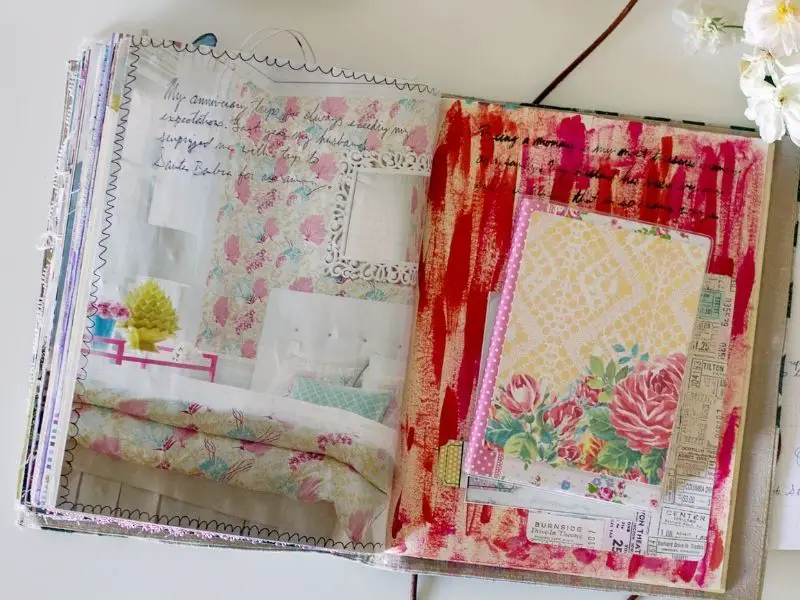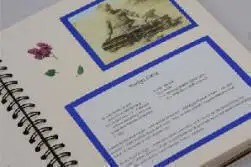Grief journaling can help us process our emotions after a loss. While most people associate grief with the loss of a loved one, the loss can be many other things: a broken relationship, a crumbled dream, the loss of a job, and more. The pain of loss can be unbearable, and sometimes expressing feelings and emotions can help immensely.

A Look At Grief Journaling
Does writing in a journal help with grief?
Apart from the visual arts, writing can also be very therapeutic during your griefwork. Why? It helps you strive for understanding, to reach inside yourself to find hidden emotions. And once you draw them out and get them down on paper, it’s done! Your mind can rest. It’s kind of like writing a to-do or shopping list. Once you’ve written it down, it frees your mind of the task of trying to remember.
When I was troubled, there were many times when I sat down to write out my thoughts on paper. Anger and fear seemed to be the biggest motivators. After I wrote it all down, I felt much better. I almost never gave the letter to the target person. That was not the purpose, and should not be your purpose in keeping a grief journal.
Keeping a grief journal can be very cathartic (cleansing) during your days of grief and sadness.
What is a grief journal?
Dear Mom, Grief Journal: A Book With Writing Prompts for those grieving their parent The Memory Book: A Grief Journal for Children and Families (Memory Box)
The Memory Book: A Grief Journal for Children and Families (Memory Box) Forever in My Heart: A Grief Journal
Forever in My Heart: A Grief Journal
A grief journal is a safe space, where you can express your feelings uninhibited.
Set aside just 15 minutes a day, either in the morning or before going to bed at night. Date each entry.
Write for your eyes only, and store your journal in a safe place. When you write privately, you can express yourself freely, giving a voice to your most vivid and complicated emotions without worrying about what anyone else might think. This is your own private connection to your heart and soul. And it’s between you and your lost one… and no one else.
Don’t worry about grammar or spelling, or neatness. Just spill your thoughts onto the paper. It’s best to do a grief journal written in longhand rather than typed on a computer, as it gives you more time to think and is more personal and warm in feel.
“There is no grief like the grief that does not speak” ~Henry Wadsworth Longfellow (1807-1882)
What do you write in a grief journal?
There are no rules for journaling your grief. Start with feelings you are feeling now. Maybe write a letter to your loved one. Ask questions, and let them swirl around your mind until you find answers.
Remember a happy memory? Write about it. Then close your eyes and re-live it in your mind. Do you have a picture of this event? Look for it. Add it to your journal: combine journalling with scrapbooking.
Don’t know where to start? Use a grief journaling prompt. Here are a few examples.
Grief journaling prompts
- if you were here, I’d tell you…
- today I came across… and it reminded me of…
- when I’m sad, I can call…
- how did your lost loved one make you feel
- what did they teach you?
- things you admired about your loved one
- list 3 things you can do to be kind to yourself this week
- who else is going through a rough time? How can you help THEM have a better day?
Create a Memory Scrapbook

Another healing activity is to make a memory book, or tribute scrapbook, about the lost loved one, together with your family. Children can also contribute to the project, and they will find much comfort from it.
Begin by collecting information and memorabilia about the lost one. Outline his or her life, to give a little structure and continuity to the book. Get everyone contributing information and stories to the effort. Storytelling is a natural part of the bereavement process and can be healing for everyone involved.
Have each person contribute their own poems and drawings, including the children. Gather snapshots, ribbons, and awards, ticket stubs or menus from special events, the CD jacket from their favorite album, a corsage from the prom, any other items that have meaning from the life you lost.
Then make a visit to a crafts store, office supply, (even some WalMarts have a “scrapbooking” section now). Wander the aisles looking for inspiration, and buy several tools and items that will fit with your project. Get creative! Bring the kids with you.
Then set aside an hour at a time for the family to gather and create this special family memory book. This project can help you all to reminisce and come to mourn a more realistic image of the lost family member.
Crafting a scrapbook in memory of a lost loved one creates a living legacy. It helps balance the feelings of finality caused by the loss.
The tribute scrapbook will be especially valuable for children to revisit as they grow up and learn to deal with the loss, throughout their lives.
We found a superb article on scrapbooking and grief journaling, which goes into more detail. Why not give it a visit?
Who Me? Publish A Book?
Okay, so you have put together a beautiful memorial scrapbook. It can be passed around and shared among family members. But what if you could actually print up several copies of your new memory book?
Did you know you could easily have bound copies of your memorial book published for under $10 each? It’s a snap with “on-demand” internet publishing sites. Two good ones are Lulu.com and CreateSpace.com.
A printed book would rely more heavily on the words, the written content than a scrapbook does. However, you can easily scan important pictures and memorabilia for inclusion in the project.
Collect writings, poems, or letters your loved one wrote. Get written contributions from the immediate family and closest friends, biographical information, or reminiscing. Spur them on by asking them to complete the sentence “I remember when…”.
Then assemble it all into a book. This activity takes a lot of time and work, but is an effective distraction and outlet for your “grief energy”. Friends and family will treasure their own personal copy as a lasting tribute to the lost one.
At Lulu or CreateSpace, you can print one copy or thousands at very affordable prices. Get the details from their websites.
Make a memorial cookbook
Nana’s Fudge 1920

- 2 c. sugar
- 3/4 c. milk
- 2 sq. chocolate
- 1/2 t. salt
- 1 T butter
- 1 t. vanilla
- nuts
Mix and cook all ingredients except vanilla and nuts. When it boils up once, lower the heat to a slow boil. After 5 min. begin testing for the soft ball stage (1/2 tsp. fudge in a cup of ice water).
When you can pick up a soft ball with 3 fingers, it’s ready. Cook 1 more minute. Remove from stove and cool completely before stirring. Add vanilla and nuts and beat until it looks like glass and begins to set. Pour into a small square cake pan.
Cut when hard, and enjoy. Save some for mother and dad. Be a good scout and clean up the kitchen afterward.

Harriet Hodgson, a well-known health and wellness writer, proposes yet another way to create a lasting tribute to a lost loved one… make a memory cookbook out of their best recipes! The fudge recipe above was one of her mother-in-law’s favorites and was placed in their family cookbook.
This is a lovely way to share the skills of prior generations with the younger ones, and spur memories of family picnics, holidays, and much-loved snacks and treats.
Most women from “the olden days” had a collection of their most-used recipes… either in a shoebox, handwritten in a notebook, or on index cards. Look for family favorite recipes that are sure to be used and enjoyed.
Next, type the recipes into a word processor. One or two recipes per page are best, and you may want to scan old family photos into your computer to add them at the top of some of the pages. Limit to about 25 pages, then print them out. You can then punch holes in the sides of the pages and place them in a small ring binder. Or check out the inexpensive book printing services noted above.
What a loving and lasting tribute! If you are looking for a meaningful (and practical) way to remember a loved one, then compile a memory cookbook to share with family members and friends!





